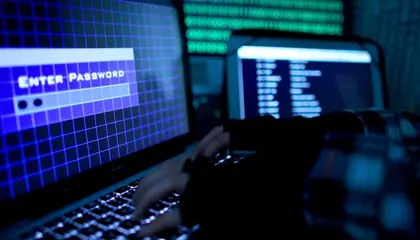Russia has “amassed an arsenal of technologies to track the online lives of citizens”, especially those inside its borders who oppose its war on Ukraine, the New York Times (NYT) reported on Tuesday July 4.
The scope and scale of Russian digital surveillance has rapidly increased following the full-scale invasion of Ukraine to “aid an internal crackdown” on dissent.
JOIN US ON TELEGRAM
Follow our coverage of the war on the @Kyivpost_official.
The Institute of the Study of War (ISW) refers to Russian increases in its surveillance technology as a form of "digital authoritarianism," in which Russia uses technology to further control its domestic population.
- Look at the latest Ukraine news that was released today.
- Russian Losses
Russian dissident figures have likened the new developments to a “cyber gulag”.
The NYT acquired documents from Russian surveillance providers and insiders which confirmed that “the technologies have given the police and Russia’s Federal Security Service (the FSB), access to a wide range of snooping capabilities focused on the day-to-day use of phones and websites.”
“The tools offer ways to track certain kinds of activity on encrypted apps like WhatsApp and Signal, monitor the locations of phones using these and other apps, identify anonymous social media users and break into people’s accounts,” the NYT article continued.
“Russia — which once lagged authoritarian regimes like China and Iran in using modern technology to exert control — is quickly catching up,” the NYT wrote.

Putin Vows ‘Destruction’ on Ukraine After Kazan Drone Attack
One software tool outlined by NYT can identify when people make voice calls or send files on encrypted chat apps such as Telegram, Signal and WhatsApp, which have generally thought to be “safe” in the past.
According to NYT, while the software cannot intercept specific messages, it can determine whether someone is using multiple phones, map their relationship network by tracking communications with others, and triangulate what phones have been in certain locations on a given day. Another product can collect passwords entered on unencrypted websites.
“It’s made people very paranoid, because if you communicate with anyone in Russia, you can’t be sure whether it’s secure or not. They are monitoring traffic very actively,” Alena Popova, a Russian opposition political figure and digital rights activist told the NYT. “It used to be only for activists. Now they have expanded it to anyone who disagrees with the war.”
Many of the surveillance tools are owned by Citadel Group, a business once partially controlled by Alisher Usmanov, who was a target of European Union sanctions as one of Mr. Putin’s “favorite oligarchs,” the NYT reported.
After Russia’s full-scale invasion of Ukraine in February 2022, the level of online censorship and prosecutions for social media posts and comments spiked so much that it broke all existing records, according to the LA Times.
As the crackdown widened, authorities also targeted Facebook, Twitter, Instagram and Telegram. About a week after the invasion, Facebook, Instagram and Twitter were blocked in Russia, but users of the platforms were still prosecuted.
According to Net Freedoms, a prominent internet rights group, more than 610,000 web pages were blocked or removed by Russian authorities in 2022 — the highest annual total in 15 years — and 779 people faced criminal charges over online comments and posts, also a record.
A major factor was a law, adopted a week after the invasion, that effectively criminalized antiwar sentiment, said the head of Net Freedoms, Damir Gainutdinov. It outlaws “spreading false information” about or “discrediting” the army, the LA Times reported.
In February 2023, Russia’s Internet regulator, Roskomnadzor, went further and launched Oculus — an AI system that looks for banned content in online photos and videos, and can analyze more than 200,000 images a day, compared with about 200 a day by a human.
According the Center for European Policy Analysis (CEPA), a European thinktank, Roskomnadzor has been operating a national system of monitoring on-line protest activities since 2020.
“In every Russian region, local branches of Roskomnadzor trace ‘points of tension’ or events that could cause public discontent. Their primary goal is to identify local troublemakers and then to share this data with the FSB and the Interior Ministry to ensure they are punished. Roskomnadzor … acts as an element of a repressive apparatus,” CEPA said.
In 2017-18, Moscow authorities rolled out street cameras enabled by facial recognition technology. When protests over the imprisonment of opposition leader Alexei Navalny erupted in 2021, the system was used to find and detain those attending demonstrations, sometimes weeks later. After Putin announced a partial mobilization for Ukraine last year, it was apparently used by officials to round up draft evaders.
There are 250,000 surveillance cameras in Moscow enabled by the software — at entrances to residential buildings, in public transportation and on the streets, according to Russian dissident sources. Similar systems are in operation in St. Petersburg and other large cities, such as Novosibirsk and Kazan.
These new surveillance tools and techniques also give Russia other strategic advantages. The ISW reported in its March 27 assessment that Russia had traded advanced surveillance technology to Iran in exchange for drones. Then, Iran was likely able to use facial recognition technology to identify and detain dissidents during domestic protests in September 2022.
You can also highlight the text and press Ctrl + Enter






